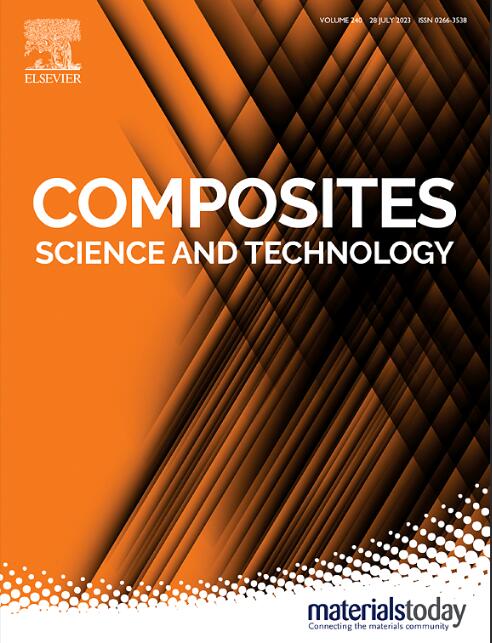Cross-scale optimization of interfacial adhesion and thermal-mechanical performance in carbon fiber-reinforced polyimide composites through sizing agent evolution
IF 8.3
1区 材料科学
Q1 MATERIALS SCIENCE, COMPOSITES
引用次数: 0
Abstract
The modification of carbon fibers with sizing agents, as an alternative to incorporating nanoparticles, has emerged as a practical strategy to enhance the interfacial adhesion and improve the thermal and mechanical properties of carbon fiber-reinforced thermoplastic polyimide (CF/TPI) composites. However, the lack of comprehensive understanding of the behavior and transformation of sizing agents during composite processing limits the performance enhancement of the composites. In this study, the interfacial mechanisms of sizing agents are systematically analyzed, distinguishing between chemical bonding and physical interaction pathways, while addressing the stages of wetting, molecular diffusion, and interfacial crosslinking. By optimizing the balance between chemical and physical interfacial mechanisms, significant improvements in stress distribution and filler-matrix compatibility are achieved. A quantitative relationship between sizing agent concentration and interfacial evolution was established, enabling precise control of the interface formation stages, including diffusion and crosslinking. The thermal conductivity of the optimized CF/TPI composites is 490% of that of PI. When used as a heat sink, it reduces the LED center temperature by 26 °C, while maintaining a tensile strength of 73 MPa and a retention rate of 69% at 200 °C. These results indicate that the precise control of the sizing process improved stress transfer across the interface, reduced microstructural defects, and contributed to enhanced thermal management and structural durability. This work provides a novel perspective on the dynamic role of sizing agents in composite development and lays the groundwork for advanced design strategies to maximize the performance of polymer composites.

施胶剂演化对碳纤维增强聚酰亚胺复合材料界面黏附及热力学性能的跨尺度优化
用施胶剂对碳纤维进行改性,作为纳米颗粒掺入的替代方法,已成为增强碳纤维增强热塑性聚酰亚胺(CF/TPI)复合材料界面粘附性和改善其热力学性能的实用策略。然而,由于对施胶剂在复合材料加工过程中的行为和转变缺乏全面的认识,限制了复合材料性能的提高。在本研究中,系统分析了施胶剂的界面机制,区分了化学键和物理相互作用途径,同时解决了润湿,分子扩散和界面交联的阶段。通过优化化学和物理界面机制之间的平衡,实现了应力分布和填料-基质相容性的显著改善。建立了施胶剂浓度与界面演化之间的定量关系,从而能够精确控制界面形成阶段,包括扩散和交联。优化后的CF/TPI复合材料导热系数为PI的490%。当用作散热片时,可使LED中心温度降低26°C,同时在200°C时保持73 MPa的抗拉强度和69%的保留率。这些结果表明,精确控制施胶过程可以改善界面上的应力传递,减少微观结构缺陷,并有助于增强热管理和结构耐久性。这项工作为浆料剂在复合材料发展中的动态作用提供了新的视角,并为先进的设计策略奠定了基础,以最大限度地提高聚合物复合材料的性能。
本文章由计算机程序翻译,如有差异,请以英文原文为准。
求助全文
约1分钟内获得全文
求助全文
来源期刊

Composites Science and Technology
工程技术-材料科学:复合
CiteScore
16.20
自引率
9.90%
发文量
611
审稿时长
33 days
期刊介绍:
Composites Science and Technology publishes refereed original articles on the fundamental and applied science of engineering composites. The focus of this journal is on polymeric matrix composites with reinforcements/fillers ranging from nano- to macro-scale. CSTE encourages manuscripts reporting unique, innovative contributions to the physics, chemistry, materials science and applied mechanics aspects of advanced composites.
Besides traditional fiber reinforced composites, novel composites with significant potential for engineering applications are encouraged.
 求助内容:
求助内容: 应助结果提醒方式:
应助结果提醒方式:


